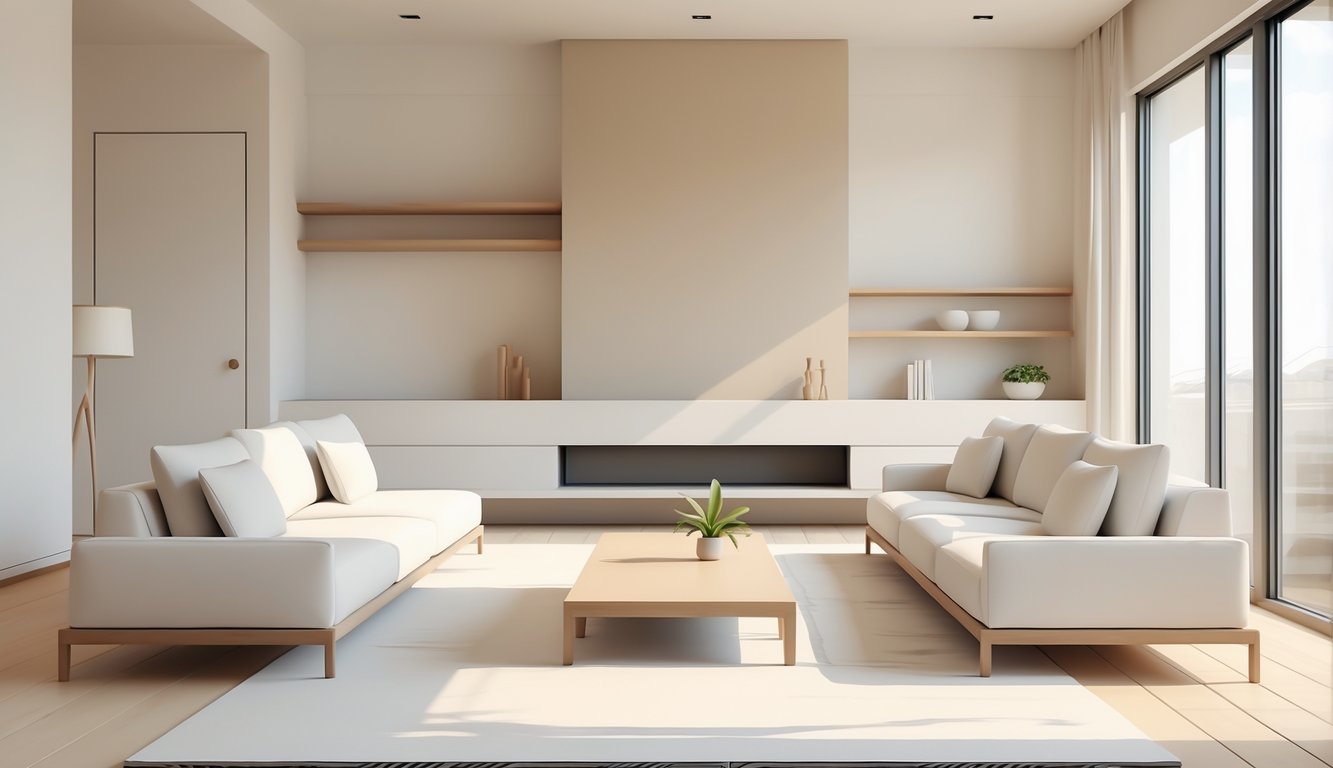
Sustainability and the Future of Minimalist Aesthetics
Right now my coffee table looks like it was erased by a giant whiteboard marker—does that mean I’m sustainable, or just lazy? There’s so much hype about “eco” everything, from LED bulbs to “green” paint. If you’d told me last year that tossing my knickknacks would help the planet, I’d have laughed and changed the subject. Probably still would.
Embracing Sustainability in Everyday Design
So, look, I can’t be the only one who’s totally over brands tossing “sustainable” into every other product description—like, okay, congrats, your lamp base is bamboo, but will that save the planet? Doubtful. I get it, stuff’s shifting—reclaimed wood here, recycled plastic there, someone’s always hyping up “repurposed” metals, but have you tried finding a recycled steel faucet that doesn’t leak? I haven’t. My architect friend—who’s weirdly obsessed with stats—once dropped this number: 83% of homebuyers supposedly care about energy efficiency. But, like, do any of these surveys factor in that minimalist furniture is just easier to shove around? No clue. I will say, not having to dust random souvenirs anymore is a small win. I’ll take that.
Don’t get me wrong, it’s not 100% marketing nonsense. The whole minimalist thing for 2025? Yeah, it’s got roots in actual climate anxiety. Designers are ditching the flashy junk and nerding out over function—industry folks keep saying so. If you want to fake expertise at dinner, just drop “VOC-free finishes” or “closed-loop manufacturing” into the conversation. People nod like you’re some eco-guru. Meanwhile, I’m still jerry-rigging my coat rack with leftover MDF. Pioneer? Not really, but I’m rolling with it.
Minimalism’s Long-Term Impact on Lifestyle
Decluttering is a fever dream. After skimming through minimalist trend predictions for 2025, I started tossing out “emergency” kitchen gadgets and immediately forgot half the stuff I owned. Allegedly, minimalism isn’t just for looks—some Harvard Health article (headline only, don’t ask me for the link) said less visual mess might lower stress. Cortisol, whatever. Still, sometimes I wish I hadn’t chucked my extra can opener.
And then there’s biophilic design—like, is sticking a plant next to your TV really going to offset your carbon footprint? My cousin swapped out her curtains for smart, automated ones after reading some blog about eco-minimalism and energy savings (here’s one of those sites). Nobody mentions that these gadgets glitch out or freeze mid-storm. So, yeah, less stuff, but more tech headaches. I still keep a paper notebook in my so-called “paperless” workspace because, let’s be honest, sometimes typing just doesn’t cut it.
Frequently Asked Questions
Trying to redo my place—man, every single decision feels like a test. Minimalism isn’t just empty rooms, it’s more like “how did this lone sock end up in the middle of the floor again?”
What are the key principles of minimalist design in home decor?
Stuffing my old futon behind a door? Not minimalism. I know that much. Mies van der Rohe was all about “less is more,” but this article claims it’s about honest materials, clean lines, and letting things breathe. Honestly, my friend tried to make every shelf “meaningful” with trinkets—completely missed the point. Minimalism is just making sure every piece earns its keep. Even if it’s a coat rack I built myself.
How can you declutter effectively for a minimalist living space?
Decluttering? It’s like running a marathon with your brain. I can’t even look at my mug collection without spiraling. Some design people swear by hidden storage cubes—great, but my cat still finds the one crumpled food wrapper. Turns out, you’re supposed to keep doing it, not just once a year. Supposedly, if an item doesn’t have a job, it’s out (random minimalist decluttering advice). I’m haunted by my neighbor’s neon throw pillows, though.
What color palette tends to define a minimalist aesthetic?
One time I painted my walls “peppermint blue.” Huge mistake. Real minimalists go for whites, grays, beige—Better Homes & Gardens swears by it. Supposedly, it calms your brain. But, weirdly, my remote still vanishes every week.
So, less chaos on the walls, but the universe still hides my stuff. Go figure.
Which materials are most commonly used in minimalist interiors?
Concrete floors, solid maple, matte black everything. The simpler, the better—or so I’ve been told. My friend’s place is all oak and steel, but the chairs squeak so loud it ruins dinner. Experts keep pushing stainless steel, glass, unpolished stone, and raw wood. Japanese minimalism? Paper screens, stone slabs, no explanation (history of minimalist interiors, if you’re curious). Makes you wonder if anyone actually lives like that.
How do minimalist designs promote a peaceful living environment?
Supposedly, walking into a clutter-free room drops your stress hormones. UCLA did a study—too much stuff, more stress (I only remember the gist). But honestly, my desk never got that memo. Neutral layouts are supposed to help your brain chill out. Unless your dog decides the “open floor plan” is his new racetrack.
What are some budget-friendly tips for achieving a minimalist look?
Honestly, who decided you need to spend a fortune just to look like you don’t own anything? IKEA is right there. I grabbed this $20 linen curtain—didn’t even check the measurements, whatever—because why would I pay for “custom” blinds? And decorators, or whoever those people are, keep insisting things like swapping out ancient cabinet handles or slapping some beige paint on grandma’s dresser actually matter. More than, I don’t know, buying some overpriced lamp that looks like a spaceship.
I tried building shelves once. Disaster. Planks everywhere, nothing lined up. So, yeah, if you’re gonna DIY, maybe measure stuff? Or just ask a friend who isn’t cursed with my lack of spatial awareness. That’s literally all I’ve got.